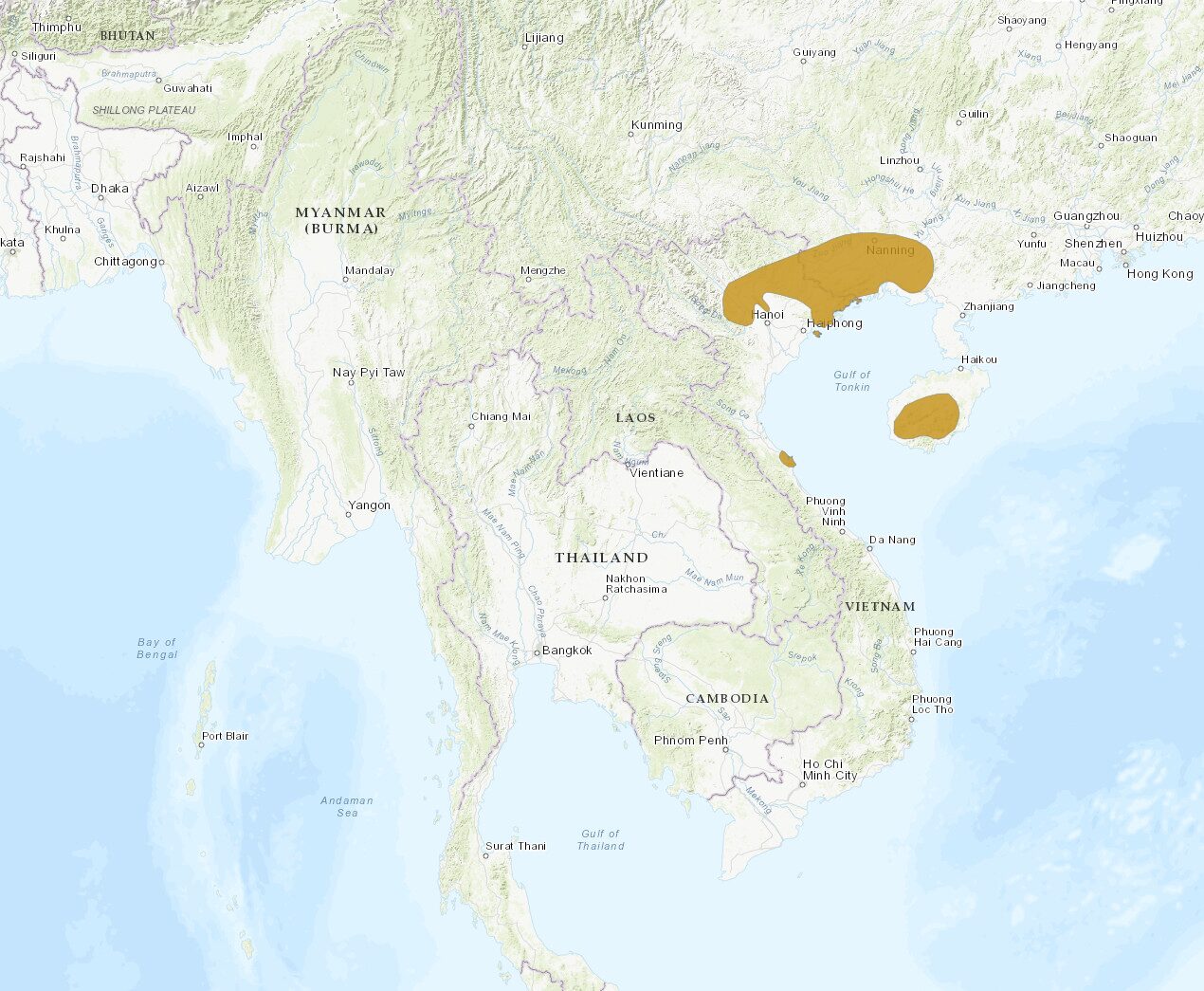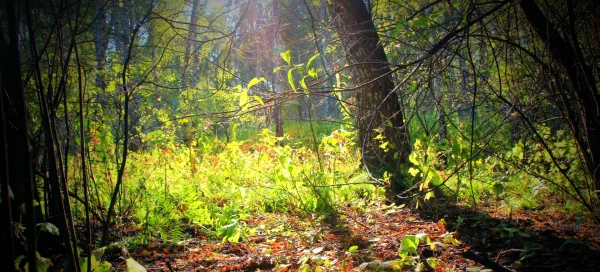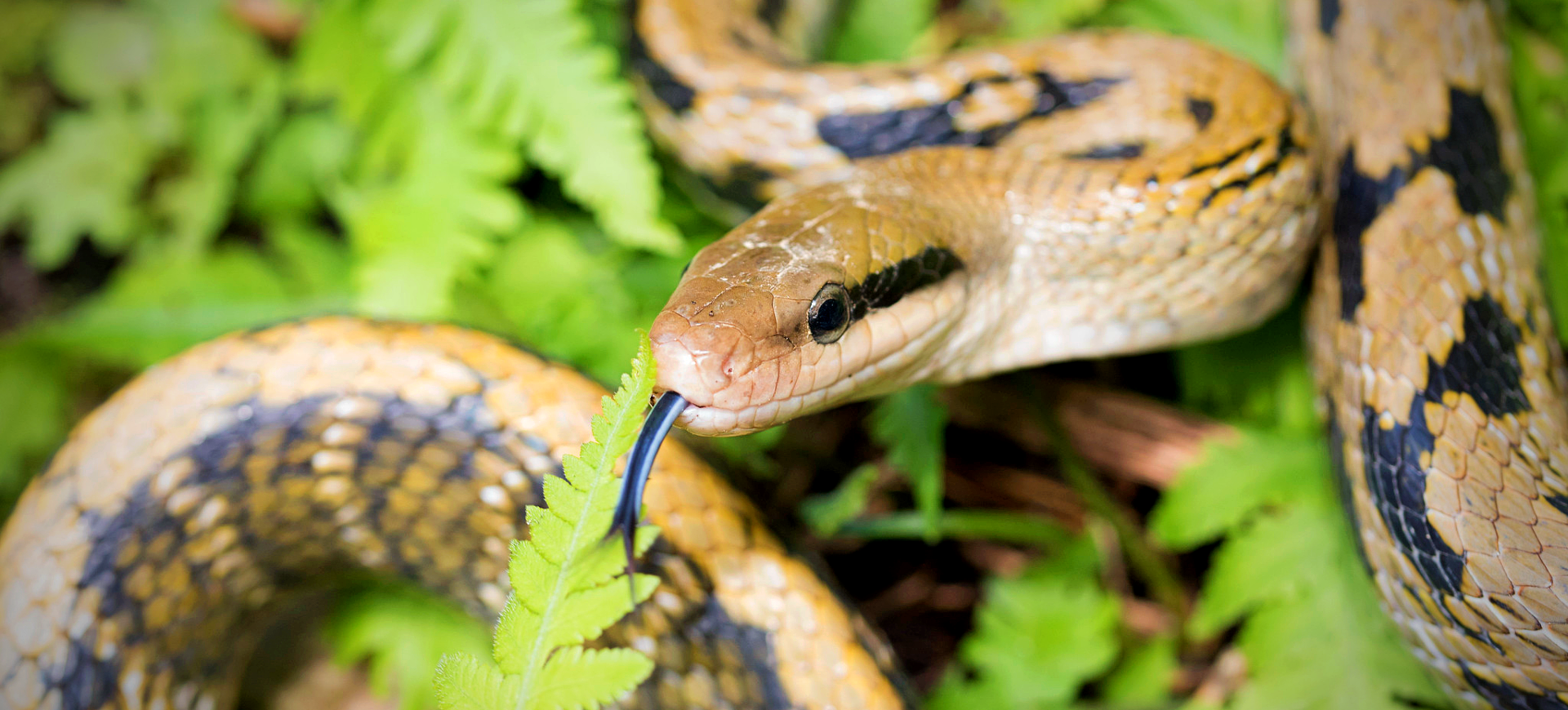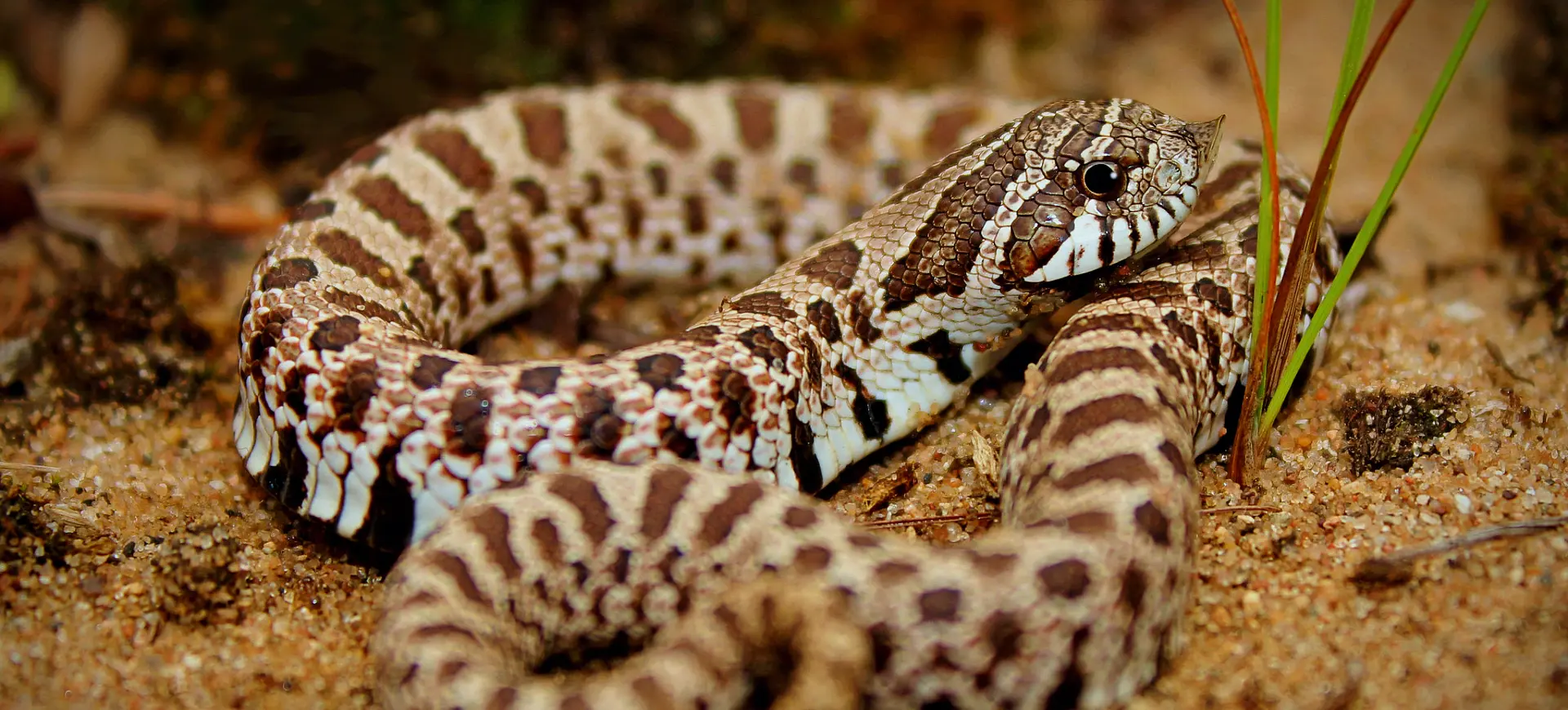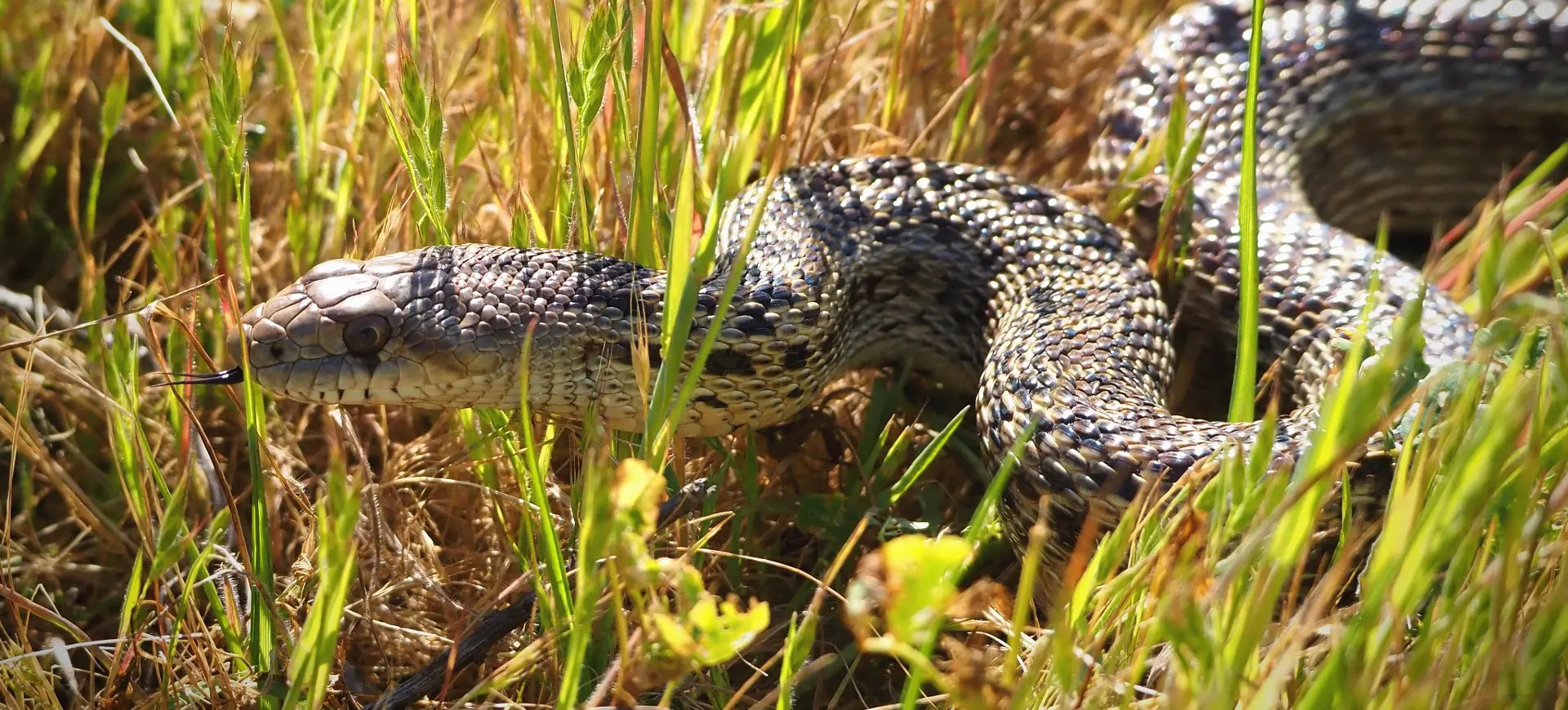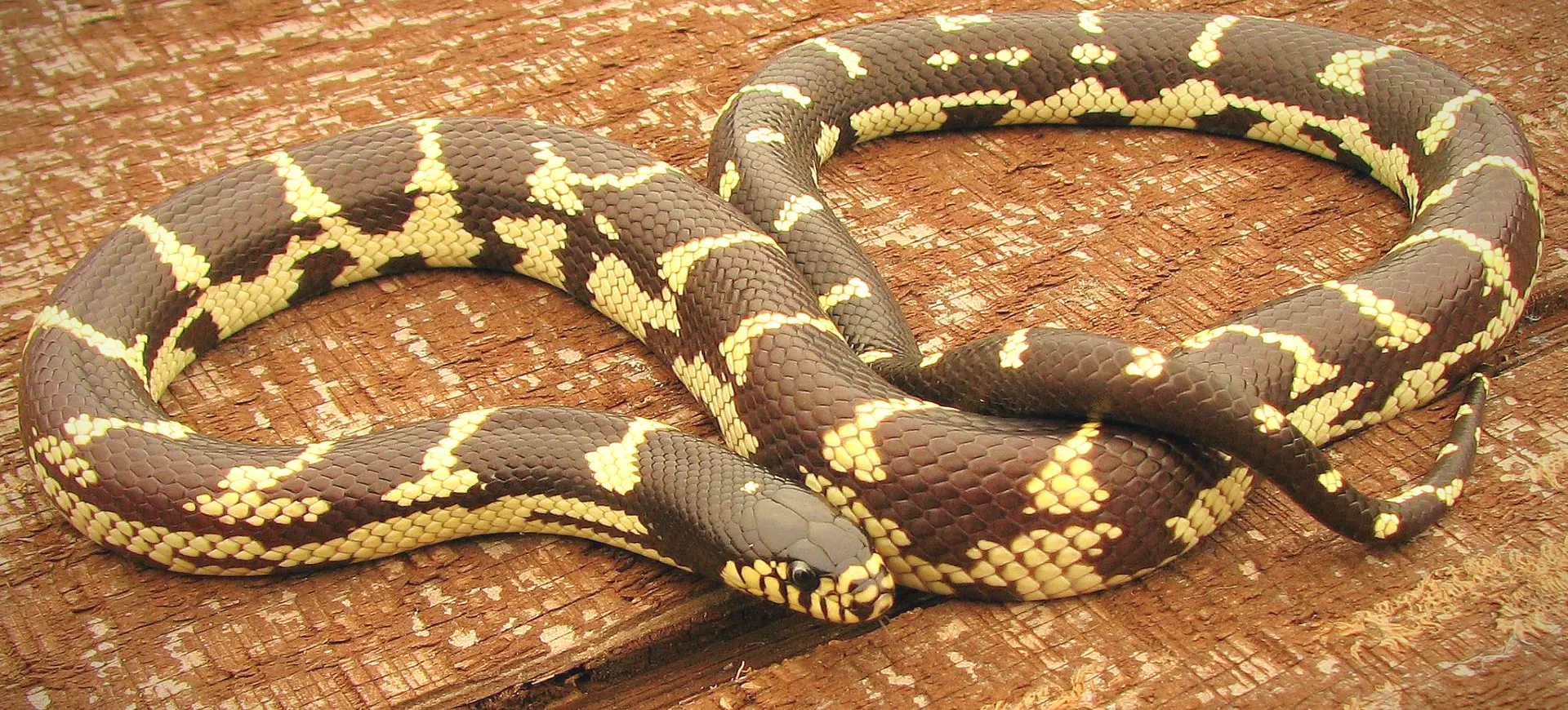Overview
The Rhinoceros Ratsnake, scientifically known as Gonyosoma boulengeri, is a distinctive non-venomous snake species primarily found in the forests of Vietnam and southern China. Noted for its unique, protruding nasal horn, which gives it the common name of Rhinoceros Ratsnake, this feature is more pronounced in males than females and is the source of much fascination. The snake is medium-sized, typically reaching lengths of around 100 to 120 cm, and is characterized by its bright green color, which provides excellent camouflage among the foliage of its arboreal habitat.
This species is largely nocturnal, spending most of the daylight hours resting in the safety of tree branches. During the night, it actively hunts for its primary prey, which includes small rodents, birds, and occasionally amphibians. The Rhinoceros Ratsnake’s arboreal nature means it is well-adapted to climbing, and it uses its prehensile tail to secure itself to branches as it moves through the canopy. Its striking appearance and docile nature have made it a popular species within the exotic pet trade, although this has also raised concerns about the sustainability of wild populations.
Rhinoceros Ratsnakes’ conservation efforts focus on habitat protection and regulating trade to ensure that wild populations are not threatened by excessive collection. Despite its popularity in captivity, the snake remains relatively rare in the wild, with habitat destruction posing the biggest threat to its survival. Education and awareness programs are crucial for promoting the conservation of this unique species and its environment.
Taxonomy
Kingdom
Phylum
Class
Order
Family
Genus
Species
Type
Current distribution:
The distribution of the Rhinoceros Ratsnake is concentrated primarily in specific regions within Vietnam and southern China, where it faces significant environmental challenges. Its populations are notably fragmented, a direct consequence of widespread habitat destruction driven by rapid urbanization and agricultural expansion. This fragmentation compromises genetic diversity and reduces the snakes' ability to migrate, mate, and access diverse food sources, crucial for their survival and reproduction.
In addition to habitat destruction, the Rhinoceros Ratsnake is heavily impacted by the international pet trade, which targets them for their unique appearance. The demand for these snakes in the exotic pet market leads to overcollection, further threatening their already vulnerable wild populations. The ongoing loss of habitat, coupled with the pressures from the pet trade, calls for urgent conservation measures to protect and restore their natural environments, ensuring the snakes' sustainability in the wild.
Physical Description:
The most striking feature of the Rhinoceros Ratsnake is undoubtedly its “horn,” a scale-covered protrusion above its nose, which is believed to play a role in mate attraction and interspecies competition. The snake’s body is slender and elongated, well-suited to its arboreal lifestyle, and covered in smooth scales that enhance its ability to glide through branches. The overall coloration is a vibrant green, camouflaging it in its natural habitat and making it a visually striking species.
Females are generally larger than males, a common trait in many snake species where a larger body size may benefit the females in reproduction, particularly in the number of eggs they can produce. The eyes of the Rhinoceros Ratsnake are large and rounded, enhancing their night vision, which is crucial for their nocturnal hunting activities. This species does not display the aggressive behaviors seen in many snakes; instead, it tends to freeze or flee when threatened, relying on its camouflage as its primary defense mechanism.

Lifespan: Wild: ~15 Years || Captivity: ~20 Years

Length: Male: 39-47 in (100-120 cm) || Female: 43-51 in (110-130 cm)
Characteristic:
Native Habitat:
The Rhinoceros Ratsnake is found in the moist forests of Vietnam and southern China, where it thrives in high humidity and dense vegetation. This habitat provides the cover and climatic conditions the snake prefers and is a rich prey source. The snake’s arboreal nature means it is rarely found on the ground, preferring instead the canopy where it can blend into the foliage.
The conservation of its habitat is critical, as deforestation and habitat fragmentation are the primary threats to its survival. Preserving the integrity of these forest ecosystems is essential for the Rhinoceros Ratsnake and the myriad of other species that depend on these habitats.
Biomes:
WWF Biomes:
Biogeographical Realms:
Continents:
Diet:
Diet & Feeding Habits:
Rhinoceros Ratsnakes are primarily arboreal hunters, preying on a diet consisting of small mammals like rodents and birds and their eggs, which they find in the trees. Their hunting involves active searching and ambush tactics, where they wait patiently for prey to come within striking distance. Once prey is captured, they employ constriction to subdue it, a method typical of many non-venomous snakes.
In captivity, their diet is often comprised of a regular feeding schedule of rodents, which provides them with the necessary nutrients for health and growth. Captive feeding regimes must mimic the natural diet as closely as possible to avoid health issues that can arise from dietary deficiencies or imbalances.
Mating Behavior:
Mating Description:
The mating behavior of Rhinoceros Ratsnakes involves the male demonstrating a series of ritualistic displays, including body quivering and aligning alongside the female. Mating typically occurs in the spring; the female lays eggs several weeks after mating. The clutches are relatively small, usually comprising between 5 to 10 eggs, which the female deposits in a safe, secluded location where the temperature and humidity levels are optimal for incubation.
Depending on temperature conditions, the eggs hatch after approximately two to three months, with the young snakes entirely independent of birth. They are born with a full set of hunting skills and the instinctual behaviors necessary to survive in their natural habitat, including the ability to climb and camouflage effectively from predators.
Reproduction Season:
Birth Type:
Pregnancy Duration:
Female Name:
Male Name:
Baby Name:
Social Structure Description:
Rhinoceros Ratsnakes exhibit a distinctly solitary nature, spending most of their lives independently, except during the breeding season. This behavior is typical of many snake species that require significant personal space and resources to thrive. The solitary nature of these snakes ensures that each individual has adequate access to food and essential environmental features like basking spots without competing with others of its kind, which is particularly important in the resource-scarce environments they often inhabit.
Outside the mating period, Rhinoceros Rat Snakes are highly territorial, actively avoiding interaction with other snakes to minimize conflict and competition. Each snake patrols and defends a specific area, which helps maintain a balance in the local population by naturally regulating density and resource use. This territorial behavior is crucial for their survival, allowing them to maximize available resources in their arboreal habitats, thus supporting their health and reproductive capabilities.
Groups:
Conservation Status:
Population Trend:
Quantifying the exact population of the Rhinoceros Ratsnake in the wild poses significant challenges, primarily due to their secretive behavior and the difficult terrains of their natural habitats. The species’ preference for dense, arboreal environments makes it hard for researchers to conduct comprehensive surveys and accurate assessments. Consequently, while specific population figures are elusive, the Rhinoceros Ratsnake is generally considered rare in the wild, further exacerbated by ongoing environmental degradation and human interference.
The primary threats to the survival of the Rhinoceros Ratsnake include habitat loss from deforestation for agriculture and urban development and exploitation for the international pet trade. These factors diminish the natural populations and fragment the habitats necessary for their breeding and foraging. In response, conservationists have been working on captive breeding programs to reduce harvesting pressures on wild populations; however, without robust conservation strategies and effective habitat protection measures, the long-term survival of the Rhinoceros Ratsnake remains uncertain.
Population Threats:
The Rhinoceros Ratsnake faces several significant threats that jeopardize its survival, with habitat destruction at the forefront. Extensive logging and agricultural expansion within its native range led to the loss of the forested environments it requires for shelter and hunting. As their natural habitats are converted into farmland or urban areas, these snakes lose their homes and the diverse ecosystems necessary for their reproduction and growth, leading to decreased population resilience and genetic diversity.
In addition to habitat loss, illegal poaching for the pet trade severely depletes the Rhinoceros Ratsnake populations. Due to their striking appearance and gentle nature, they are highly sought after by collectors and hobbyists, leading to overcollection and smuggling, often unsustainable and unregulated activities. Furthermore, climate change introduces another layer of threat, altering the microclimates of their habitats, which can affect the availability of prey and suitable living conditions. These environmental shifts may render their habitats inhospitable, challenging the species’ ability to adapt and survive in the wild.
Conservation Efforts:
Conservation efforts aimed at safeguarding the Rhinoceros Ratsnake are multifaceted, focusing primarily on habitat preservation and the stringent regulation of the pet trade. Establishing protected areas within their native range is crucial; these reserves offer the snakes a refuge where they can thrive, mate, and hunt away from the destructive impacts of human activities. By securing these critical habitats, conservationists help maintain the ecological balance necessary for the survival of the Rhinoceros Ratsnake while preserving the region’s broader biodiversity.
Moreover, education and outreach programs are pivotal in conserving the Rhinoceros Ratsnake. These initiatives aim to inform local communities about the ecological importance of the snake and the risks it faces from habitat loss and illegal trade. By fostering a deeper understanding and respect for this species, such programs encourage community involvement in conservation efforts and reduce negative interactions between humans and these often misunderstood creatures.
Additional Resources:
Fun Facts
- The Rhinoceros Ratsnake’se’s horn is not used for fighting or predation but may play a role in sexual selection. Females might choose mates based on the size and shape of the horn.
- They are capable of a unique form of movement called “cocertina locomotion”, which allows them to move smoothly between branches.
- Despite their striking appearance, Rhinoceros Ratsnakes are relatively docile and are known to rarely bite, even when handled.
- The snake’s green coloration not only helps it blend into its environment but also makes it one of the more visually distinctive snake species.
- Captive breeding programs have helped diversify the genetic pool of Rhinoceros Ratsnakes in captivity, which is crucial for maintaining healthy captive populations.
- They are known for their longevity in captivity, where they can live longer than in the wild due to the absence of predators and controlled diet and health care.
- The species has been featured in various herpetological studies due to its unique morphological features and behaviors.
- Rhinoceros Ratsnakes use their tongue to sense chemicals in the air, helping them locate prey or recognize the presence of other snakes.
- They shed their skin several times a year, a process that helps remove parasites and promotes healthy growth.
- The conservation of the Rhinoceros Ratsnake is often used as a flagship for broader conservation efforts aimed at protecting the rich biodiversity of their habitats.


